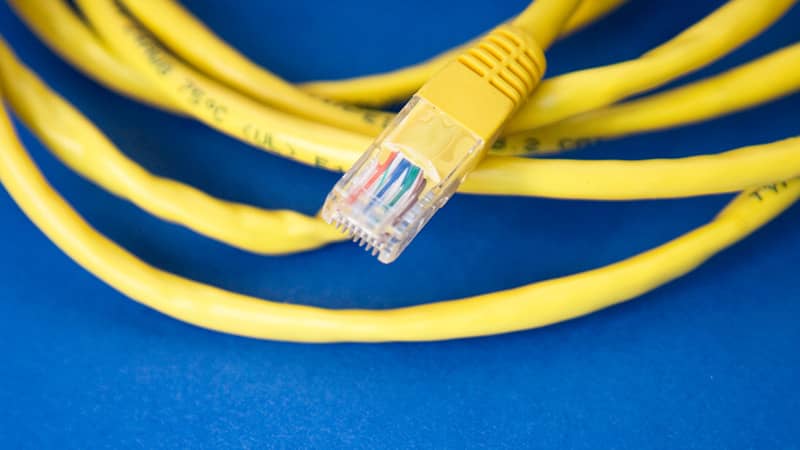
How to Ensure A Reliable AV Integration
If you’re wondering how to ensure a reliable AV integration for your next control room project, there are a few considerations you’ll have to keep in mind at all times. In complex AV integrations, the number of possible products, solutions and connections can be numerous, increasing the risk of something going wrong. A strategic approach to connectivity during your project design and component selection can significantly minimize failures and optimize your AV deployment.
In this article you’ll find some insights and best practices on how you can ensure a reliable AV integration with your next installation.
Select The Right AV Components for Your Needs
When we think about performance and reliability in an AV project, our first thoughts often go to the complex technology involved in every appliance we intend to use. We tend to see connectors as those little unbreakable, solid-state devices used to connect all our sophisticated pieces of equipment – definitely the last thing we expect to fail. Unfortunately, that’s not always the case.
Each point of connection can be an achilles heel
It’s easy to get caught up in the impressive range of technology and individual components available to you. While manufacturers focus on building reliable products, many tend not to consider how those products are interconnected with the rest of your system. No doubt, any reputable manufacturer will deliver the most reliable product they can, but the connector then becomes this sort of “no-man’s land” between each other appliance or piece of hardware you connect. And if you’re at all familiar with the AV industry and it’s challenges, you know this has been an issue in the professional AV industry for decades.
There can be a lot of connections in a professional AV project, and every connection point introduces a potential point of failure. So, it’s crucial to consider not only the technology within each device but also how those devices will be integrated and connected.
Connectors and cables for the right environment
A good rule of thumb is to select connectors and cables designed for the specific application and environment you’re focused on. For example, if you’re installing a video wall in a control room, you’ll need connectors and cables that are rated for 24/7 operation and can withstand the rigors of a mission-critical environment. Conversely, if you’re installing a video wall in a high-traffic area, you’ll also need connectors and cables that are durable, and can withstand being stepped on or bumped into.
As with anything, you tend to get what you pay for, so connectors and cables for an AV integration are no different. Don’t skimp on these essential components; by using high-quality connectors and cables, you can help to ensure that your AV system is reliable and performs as expected.
Connection: The Unsung Hero of AV Integration
If you see water dripping somewhere in your home, your first reaction will be to verify each connection before you start disassembling your dishwasher. But with AV, when you have a bad signal on your screen or your speaker, there is no visible “leaking” along the signal path and your first reaction will be to look into any piece of equipment between the source and your screen or speaker. You may even go to the most complex item in the chain or the item with which you are the least familiar. You may even question the quality of the software used to control your devices before you check your connections! We have seen this time and time again… it’s a common reaction. But is it the right one?
As a manufacturer, we can safely say that nearly 25% of the service calls we receive end up being related to a connection or cable issue. This represents a lot of time wasted by technicians in the field before they can identify a poor or broken connection which can generally be fixed in seconds or minutes!
Unfortunately, most of the time, connectors and cables are not considered in the early stages of troubleshooting. So, what is the best way to technicians from wasting their time in the field? Have a strategic approach to connectivity while designing your project and selecting your components.
Here are my 5 tips on how you can minimize connection failures and optimize your AV deployments:
1) Minimize The Number of Connections in Your AV System
Every connection point in an AV system is a potential point of failure. By minimizing the number of connections, you reduce the risk of signal degradation or interruption. Fewer connections also mean less clutter and simpler maintenance.
VuWall’s PAK video wall controller and processor integrates compositing, switching, routing, and control panel functionalities into a single unit. This eliminates the need for separate matrix switches (or KVM switch), multiviewers, and control systems, significantly reducing connection points.
2) Standardize The Type of Connection You’re Using
Reduce compatibility issues and simplify troubleshooting by sticking to a consistent connector type. Avoid connections where you have to crimp on-site for digital video cable links like HDMI, DVI and DP, as this can lead to unreliable connections. If you have to use extender devices that will required CATx links between them, make sure you use a proper CATx cable AND connector that meet the signal requirement that can achieve the cable length required.
In other words, don’t use a CAT5 cable to achieve a 4K/60 signal over 100 meters. This scenario clearly requires a CAT6a or better. Finally, make sure to test all custom cables with a proper CATx cable tester. VuWall’s controllers and extenders are designed for compatibility with standard connector types, ensuring seamless integration and reliable signal transmission.
3) Use The Manufacturers’ Recommended Connectors or Extenders
Not all HDMI cables and connectors are created equal. Remember what we discussed above: only use components that are specifically recommended or certified by the manufacturer to ensure optimal performance and compatibility with their products. At VuWall, we thoroughly and routinely test cables and extenders to make sure they don’t affect signal integrity. VuWall offers certified cables and extensions to guarantee reliable performance with our systems.
4) Adapt Your AV Connectivity Strategy to The Environment
Humidity, vibration, point-to-point distance, electromagnetic fields all play a role. These are important factors to consider. For example, make sure to never run your cables alongside electrical wires. If you must cross electrical wires, it is always best to cross them perpendicularly at 90 degrees.
Also, make sure that your cables are pulled properly: avoid bending them too much and make sure that they have adequate support along the cable path not to damage them. Don’t over-tighten your cables when using ‘’Standard’’ tie-wraps as this may cause internal damage to the conductor insulation and create a variety of other problems.
5) Always Opt for Quality in Any AV Integration and Installation
I can’t stress this enough: always invest in high-quality connectors and cables to save time and money in the long run. Cheap components are more prone to failure, leading to costly troubleshooting and replacements. Now, that being said, expensive connectors do not always necessarily mean higher quality, so make sure you trust the manufacturer or consult an expert for advice.
For installers: don’t try to save a few bucks on connectors and cables at the risk of having to go back on site for days of troubleshooting. Not only will this reduce your client’s confidence, but it will certainly affect the project’s bottom line!
And last but not least, try to select locking connectors as much as possible (I know it’s hard to avoid HDMI).
Remember! Your system is only as reliable as its weakest link!

